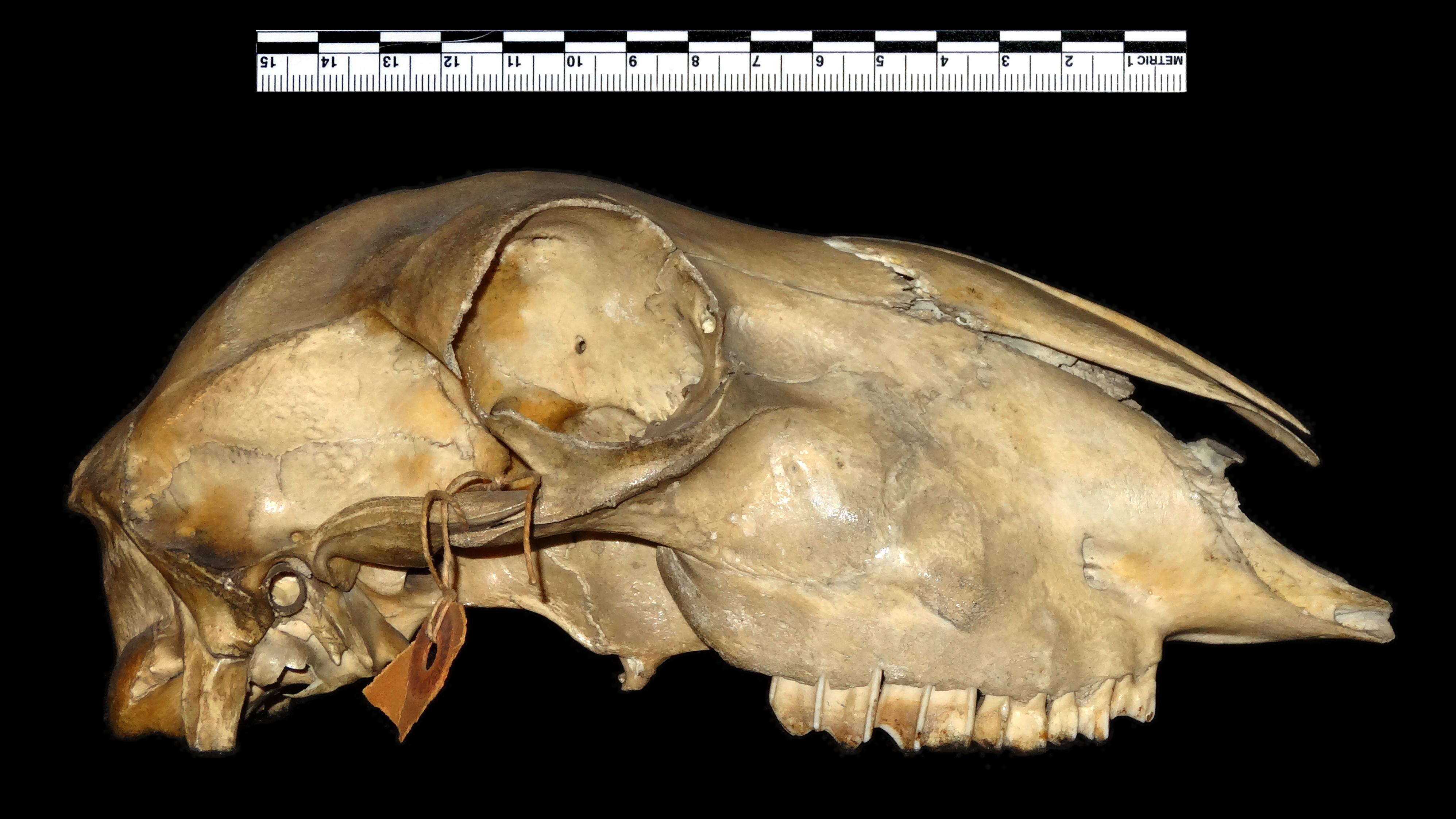Last week I gave you this lovely primate skull from the Grant Museum of Zoology to identify:

When I first saw it I assumed it was a Macaque of some kind. It’s obviously in the Cercopithecidae (or an Old World Monkey) based on the number of premolars – 4 in the upper jaw instead of the 6 you’d get in a Platyrrhini (or New World Monkey). Macaques are common in collections and they have a similar overall appearance to this specimen.
However, I then noticed the particularly deep hollows under the eyesockets and the flaring of the maxilla where it meets the nasals, which is not a characteristic of Macaques.

It actually reminded me a bit of a toned down version of a Mandrill skull, so I started by looking at the phylogeny of primates to get an idea of which species were more closely related to the genus Mandrillus.

Primate phylogeny from Goodman et al. 2005. Trends in Genetics. 21(9):511–517
As you can see the Mandrills share a sister relationship with the genus Cercocebus, which are the White-eyelid Mangabeys, so that’s where I started looking. It turns out that these infraorbital depressions are a Mangabey feature, so I then looked at the various types of Mangabey (not just those in the genus Cercocebus).
It wasn’t easy finding specimens for comparison, but I did find a very useful (if a bit old) paper on Mangabeys by Groves (1978), which gave good descriptions of the various species, allowing me to rule out the Sooty Mangabey and narrow the likely species down to the Golden-bellied Mangabey or, my personal preference, the Agile Mangabey Cercocebus agilis (Milne-Edwards, 1886).
These monkeys have a shorter, relatively broader face than the more familiar Sooty Mangabey, with deeper and broader hollows under the orbits.
So well done to everyone who recognised that this skull belonged to an Old World Monkey, with particular congratulations to Cindy Nelson-Viljoen and palfreyman1414, who all came close in terms of taxonomy and a big round of applause for inkydigit who narrowed it down to the right genus!
More mysteries to come next week…
















































